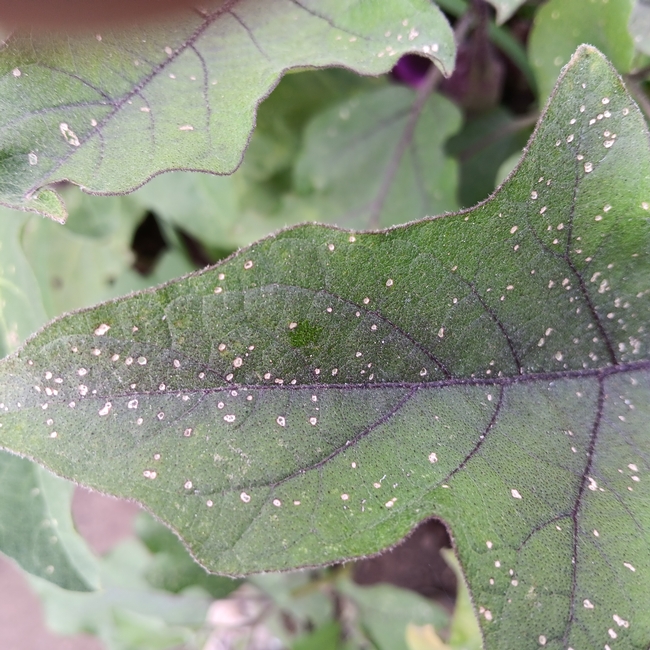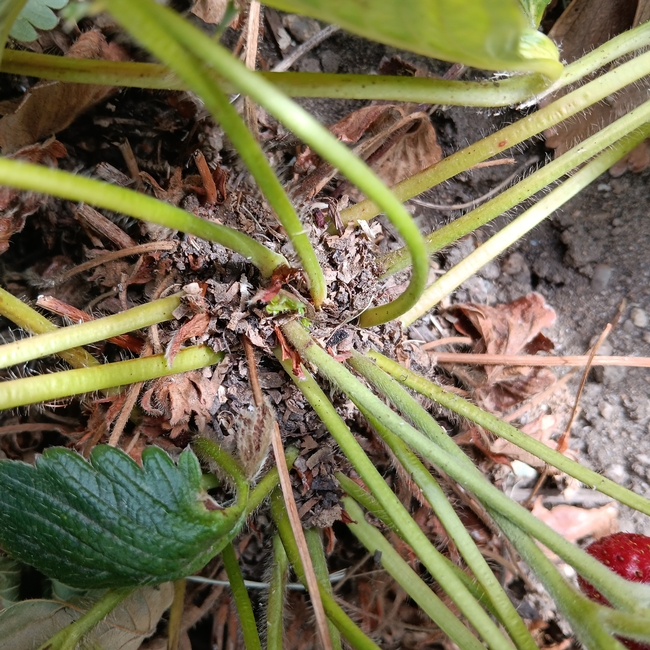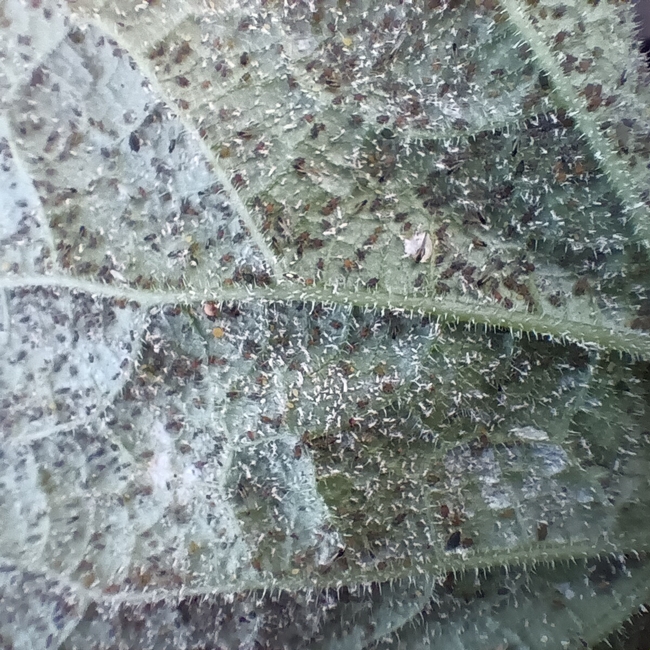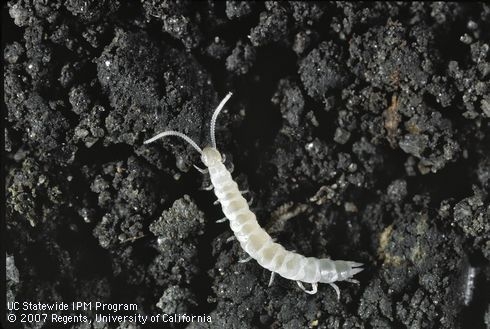This year I was determined to create the “model garden” that I have long dreamed about, but those dreams of neat, weed-free rows of vegetables, trees hanging with fruit, and armfuls of flowers are far from being fulfilled. In fact, I have had a garden of pestilence and disease on a scale that I have never faced before.
In accordance with modern ideas of “gardening with nature” last fall, I spread compost and rotted manure in liberal quantities. I left leaves on the ground in order to afford some protection to plants and beneficial insects in our high desert location. This resulted in my seeing the first grasshopper – a whopper – on January 26, followed shortly after that, by clouds of leaf-hoppers erupting from some mulch that I had put over my strawberry plants and blackberry roots. It was not apparent that the beneficial insects gained the same advantage.
Carefully nurtured spring transplants, often consisting of rare or unusual species were rapidly chewed to stubs before I had managed to get any protection set up. As the weather warmed a large crop of fence lizards appeared, and it gave me immense satisfaction to see grasshopper legs protruding from their mouths. Nothing seemed to eat the leaf-hoppers and spraying with horticultural oil failed to reduce their numbers.
The blossom on the fruit trees was a joy to behold until early May when a frost damaged the flowers and destroyed the early fruit set, so no plums, peaches, or cherries this year, and only a few pears. Potato shoots were frosted and a tomato which was covered with two layers of insulating cloth was cut to the ground.
I thought how pretty the gray foliage of the California poppies looked in the pollinator garden before I realized that they were suffering from a hefty dose of powdery mildew which also severely affected all the larkspur and older roses, although the modern hybrids were largely resistant. This problem, which likes dry conditions affected only one side of the house, while the better irrigated areas of fruit trees and vegetables showed no signs of it.
By early June it became evident that our irrigation system had problems. With drip irrigation, much of it is out of sight, and it is not always apparent when things go wrong. I lifted the lid of the irrigation vault and found it full of water and a mass of fibrous roots from the nearby grape vine which was growing vigorously. This led to a redo of the vault and installation of new valves. The grape immediately took umbrage at the disturbance, and the loss of roots and water and went into a state of shock; the leaves already much damaged by leaf hoppers crisped and the few bunches of grapes stopped swelling. Within a couple of weeks the vault had been invaded by a ground squirrel which had managed to follow a pipe into the vault and thrown soil all over the valves.
Through all this my usually trusty potatoes stopped growing and the foliage turned yellow and looked awful. I left them for a month to see if they would improve then began to dig them up. Each plant had a cluster of small potatoes with many enlarged lenticels - indicative of too much water. There were a lot of symphylans present so I suspect that they had damaged the roots or tubers somehow. The carrot patch had also received too much water so that the well grown ones have split from crown to root tip.
Low growing fruits – strawberries, figs, raspberries and blackberries began to disappear into the gut of the ground squirrel and various birds but netting the awkward shapes of all these plants was challenging and did not solve the problem. Next, a rat discovered the joy of eating grapes and most of the remaining bunches became bare stalks – a reminder of what could have been.
The annual thrips infestation of onions began early and I only managed partial control with insecticidal soap sprays. Luckily the onions don't look too bad. Rhubarb leaves were skeletonized by European earwigs, which also took a shine to the foliage of a precious new dahlia plant.

I tried to grow fillet French beans for the first time, but they very quickly became infected with a virus, some almost as soon as they got their first true leaves. Yesterday I noticed that my best Japanese eggplant is laced with holes from flea beetles and there are now large yellow patches on the newer leaves, possibly caused by some disease.

Ants have dominated every corner of the garden and one variety has taken to building mounds of organic matter over the crowns of the strawberry plants. The zucchini was taken over by one species of large ant. They were particularly drawn to the flowers, and although they prevented the squash bees from getting close, the ant must have pollinated the flowers since we had an excellent crop, and only one squash bug all summer! However, they have now started to farm aphids on this plant and also the nearby cucumbers which became so badly affected by sooty mold that I had to dispose of them. As it happens that is not such a loss since many of the cucumbers have been extremely bitter – a problem that I have never had before.
In the fourteen years that I have gardened in Bishop I have had very few serious pests or diseases, of any sort, apart from the ever present Bermudagrass, spotted spurge, and purslane which seem minor compared to the problems that this year has brought.
On the brighter side: My tomatoes have done well and stayed disease free so far, the pear tree seems to no longer be infected with blister mites or fireblight, there were few aphids on the peach trees and cherry and all the fruit trees have put a lot of energy into growth rather than fruiting, so I have had a restful summer, well away from the preserving pan, although now I have to get the pole pruner out!
You never know what's in store for one's garden. I hope that I will achieve my “model garden” next year...

